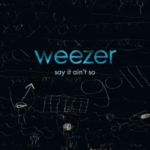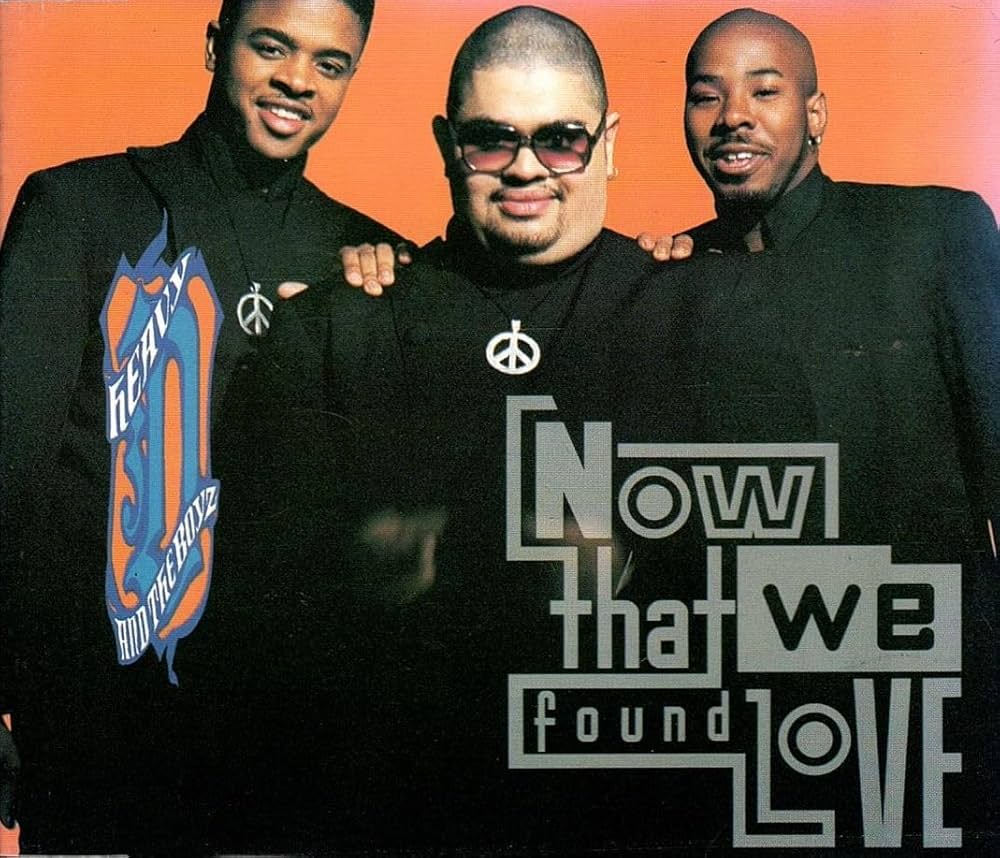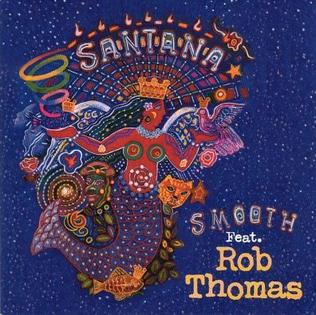 Weezer’s “Say It Ain’t So” stands as one of the defining tracks of 1990s alternative rock—a song that combines raw emotional honesty with infectious melodic hooks. Released in 1994 as part of the band’s self-titled debut, commonly known as The Blue Album, the track became an instant fan favorite and remains a cornerstone of Weezer’s catalog. Its enduring popularity stems from the perfect convergence of heartfelt lyrics, melodic guitar lines, and a carefully crafted dynamic structure that draws listeners into a deeply personal narrative while maintaining broad appeal.
Weezer’s “Say It Ain’t So” stands as one of the defining tracks of 1990s alternative rock—a song that combines raw emotional honesty with infectious melodic hooks. Released in 1994 as part of the band’s self-titled debut, commonly known as The Blue Album, the track became an instant fan favorite and remains a cornerstone of Weezer’s catalog. Its enduring popularity stems from the perfect convergence of heartfelt lyrics, melodic guitar lines, and a carefully crafted dynamic structure that draws listeners into a deeply personal narrative while maintaining broad appeal.
At the heart of “Say It Ain’t So” is a story of emotional confrontation and vulnerability. Written by frontman Rivers Cuomo, the song addresses personal turmoil and family strife, particularly feelings of betrayal and fear tied to his parents’ divorce. Yet, beyond its autobiographical roots, the song resonates universally because it speaks to moments of disillusionment, heartbreak, and the complex layers of human relationships. In its bittersweet honesty, “Say It Ain’t So” captures both the pain and beauty of growing up, making it a generational anthem for the 1990s and beyond.
Weezer at the Dawn of the 90s Alternative Explosion
By the early 1990s, alternative rock was emerging as a dominant force in music, with bands like Nirvana, Pearl Jam, and Smashing Pumpkins leading a cultural shift. Weezer entered this landscape with a distinct approach: rather than embracing the raw, aggressive energy of grunge, they combined melodic sensibilities with introspective and often confessional lyrics.
The Blue Album showcased Weezer’s unique ability to marry catchy pop hooks with alternative rock’s emotional intensity. Songs like “Buddy Holly,” “Undone – The Sweater Song,” and “Say It Ain’t So” exemplified the band’s style—clear, hook-driven melodies paired with lyrical honesty and a slightly off-kilter, nerdy charm. Among these, “Say It Ain’t So” distinguished itself through its deeper emotional resonance and dramatic dynamics, allowing the song to bridge the gap between mainstream accessibility and personal vulnerability.
Origins and Inspiration
Rivers Cuomo has stated that “Say It Ain’t So” was inspired by his feelings of fear and anxiety surrounding his parents’ divorce, particularly his father’s remarriage and the subsequent arrival of a stepmother. The song grapples with the complex emotions of betrayal, abandonment, and confusion that many young adults face during such upheavals.
The opening lyric,
“Oh, my, my, my, my
Oh, my, my, my, my
I’ve got a bad feeling”
sets the stage for a narrative that is both deeply personal and universally relatable. Cuomo’s lyrics do not provide explicit exposition; instead, they capture fragmented thoughts and feelings, echoing the way people process emotional pain. The song becomes a confessional, a musical diary entry that invites listeners into the songwriter’s inner life while offering space for them to project their own experiences.
Musical Composition and Dynamic Structure
Musically, “Say It Ain’t So” is deceptively simple yet remarkably effective. The song opens with a clean, arpeggiated guitar riff, creating a sense of intimacy and introspection. This riff, played by Cuomo, is instantly recognizable and provides a melodic anchor for the song’s narrative. As the track progresses, the instrumentation gradually builds, layering distorted guitars, bass, and drums to create a dynamic tension that mirrors the lyrical content.
Weezer’s guitarist, Brian Bell, adds subtle textural support, while bassist Matt Sharp and drummer Patrick Wilson provide a steady, driving rhythm that grounds the song’s emotional arc. The crescendo into the chorus, where distorted guitars and emphatic drumming kick in, mirrors the release of pent-up emotional tension, allowing listeners to feel the intensity of Cuomo’s internal struggle.
This careful attention to dynamics is one of the song’s defining strengths. By alternating between quiet introspection and explosive release, Weezer creates a sense of narrative progression within the music itself. The tension and release structure gives the song a cinematic quality, inviting listeners to experience the story viscerally rather than just intellectually.
Lyrics and Emotional Resonance
The lyrics of “Say It Ain’t So” are notable for their balance of specificity and universality. Lines such as:
“Momma’s got a boyfriend
Seems like he’s here to stay
Oh, I wanted to tell you
But I didn’t know how”
capture concrete moments of personal conflict while also evoking broader themes of fear, betrayal, and helplessness. The song’s language is simple yet evocative, allowing listeners to immediately connect with its emotional core.
Cuomo’s use of repetition—particularly in the chorus—reinforces the sense of inner turmoil and emotional urgency. The refrain “Say it ain’t so” becomes both a plea and a mantra, embodying the wish to deny painful truths and cling to innocence or hope. It is this combination of vulnerability and melodic catchiness that gives the song its lasting power, making it resonate with audiences across multiple generations.
Production and Sonic Texture
Produced by Ric Ocasek of The Cars, The Blue Album benefited from Ocasek’s knack for creating clean, polished sounds while retaining emotional authenticity. On “Say It Ain’t So,” the production emphasizes clarity and separation, allowing each instrument to contribute to the overall narrative without overwhelming Cuomo’s vocals.
The layering of clean and distorted guitars mirrors the lyrical tension, while the steady rhythm section provides momentum without sacrificing intimacy. Ocasek’s approach ensures that the song’s emotional arc is mirrored in its sonic texture: the quiet arpeggios invite introspection, the distorted chorus evokes catharsis, and the controlled bridge allows for reflection before the final release.
Reception and Legacy
Upon its release, “Say It Ain’t So” received critical acclaim for its emotional depth and melodic craftsmanship. It became a staple of alternative radio and MTV rotations, helping to cement Weezer’s status as one of the leading voices in 1990s rock. While not the band’s highest-charting single, it arguably became the most enduring, with its influence felt across rock, pop-punk, and emo genres.
The song’s legacy is evident in its continued presence on radio, streaming playlists, and live setlists. It is widely cited by musicians and critics as a high point of Weezer’s career, exemplifying the band’s ability to fuse confessional songwriting with accessible, hook-driven rock. Its enduring popularity is a testament to the universality of its themes and the timelessness of its melody.
Live Performances and Fan Connection
“Say It Ain’t So” has become a centerpiece of Weezer’s live shows. The song’s dynamic structure allows for variation in performance, with quiet introspective passages and loud, cathartic peaks providing opportunities for audience interaction. Fans frequently sing along to the chorus, creating a communal experience that mirrors the song’s emotional narrative.
Live performances also highlight the band’s musicianship, with extended guitar sections or subtle improvisations adding freshness to a familiar track. The song’s ability to resonate in a live setting speaks to its structural strength and emotional clarity, allowing it to remain a touchstone of Weezer’s concerts decades after its release.
Influence on Rock and Pop Culture
“Say It Ain’t So” has influenced a generation of alternative and emo bands, inspiring artists to combine personal vulnerability with catchy, guitar-driven melodies. Its introspective lyrics and dynamic arrangements set a template for emotionally honest rock music, bridging the gap between mainstream accessibility and deeply personal storytelling.
The song has appeared in films, television shows, and video games, cementing its place in popular culture. Its themes of disillusionment, family conflict, and self-discovery continue to resonate, making it relevant to new audiences who discover it long after its original release.
Why ‘Say It Ain’t So’ Endures
The enduring power of “Say It Ain’t So” lies in its ability to merge lyrical honesty, melodic strength, and dynamic musical architecture. It is a song that communicates deeply personal emotions while remaining universally accessible. Its alternation between quiet introspection and cathartic release mirrors the emotional processes that listeners experience in their own lives, creating an intimate yet shared connection.
Unlike many era-specific tracks, the song has not aged; its clean production, timeless chord progressions, and emotive vocals continue to engage listeners. Its combination of vulnerability, melody, and structural sophistication ensures that it remains one of Weezer’s most beloved and influential works.
Conclusion: A Timeless Anthem of Vulnerability
“Say It Ain’t So” exemplifies Weezer at their best, capturing the tension between private turmoil and public expression, fear and resilience, introspection and release. Through Gregg Allman’s soulful voice—wait, correction, Rivers Cuomo’s emotive delivery—the intricate guitar work, and the band’s tight rhythm section, the track becomes a masterclass in emotionally intelligent songwriting.
Its dynamic shifts, memorable riffs, and lyrical confessions create a song that feels immediate, intimate, and universally relatable. The track’s themes of personal struggle, betrayal, and resilience resonate across generations, ensuring its place as a defining anthem of 1990s alternative rock.
“Say It Ain’t So” is more than a song; it is a musical confession, an emotional journey, and a testament to the enduring power of honesty in rock music. Its ability to evoke empathy, introspection, and shared experience ensures it will remain a beloved classic for decades to come.


